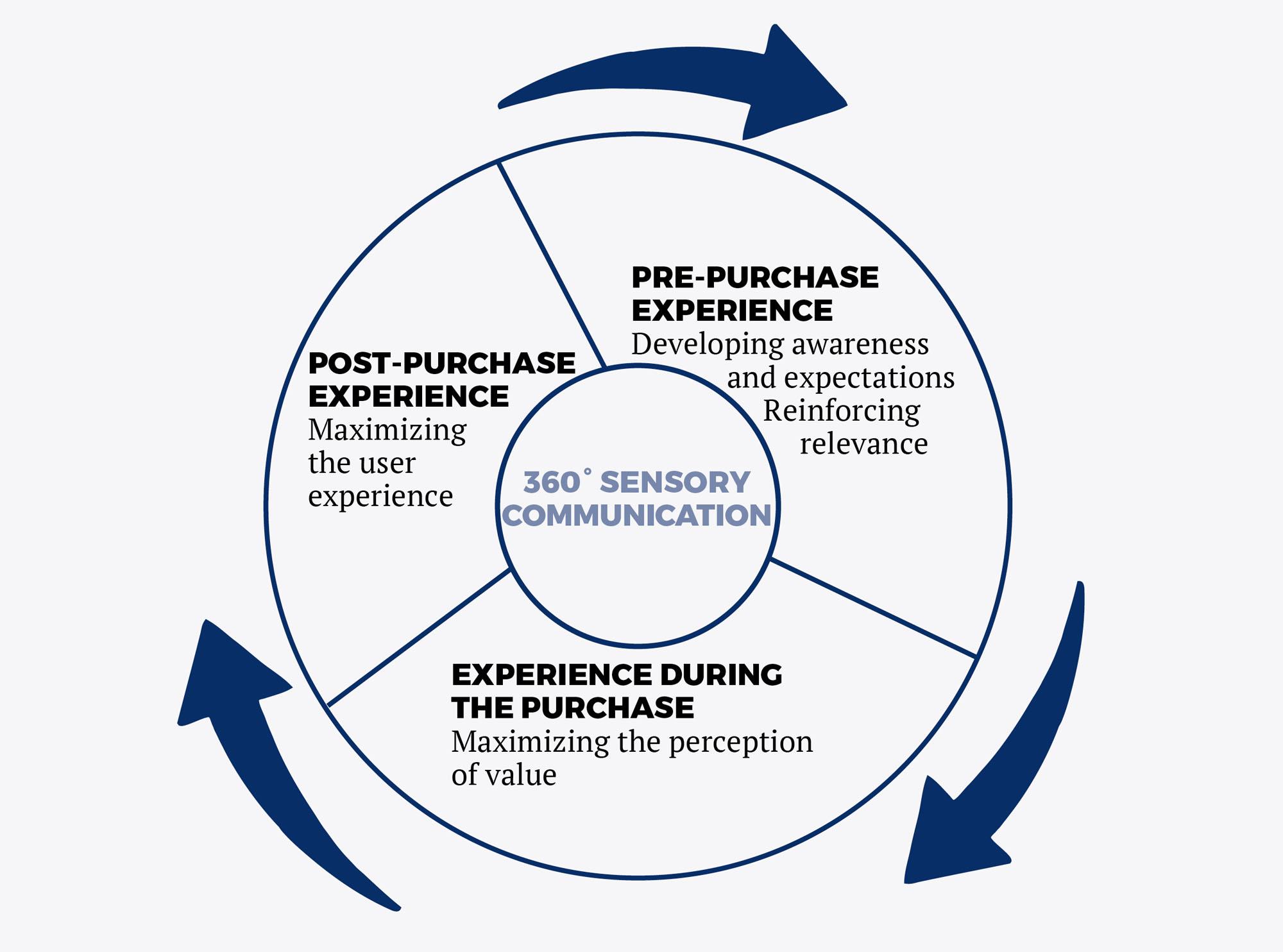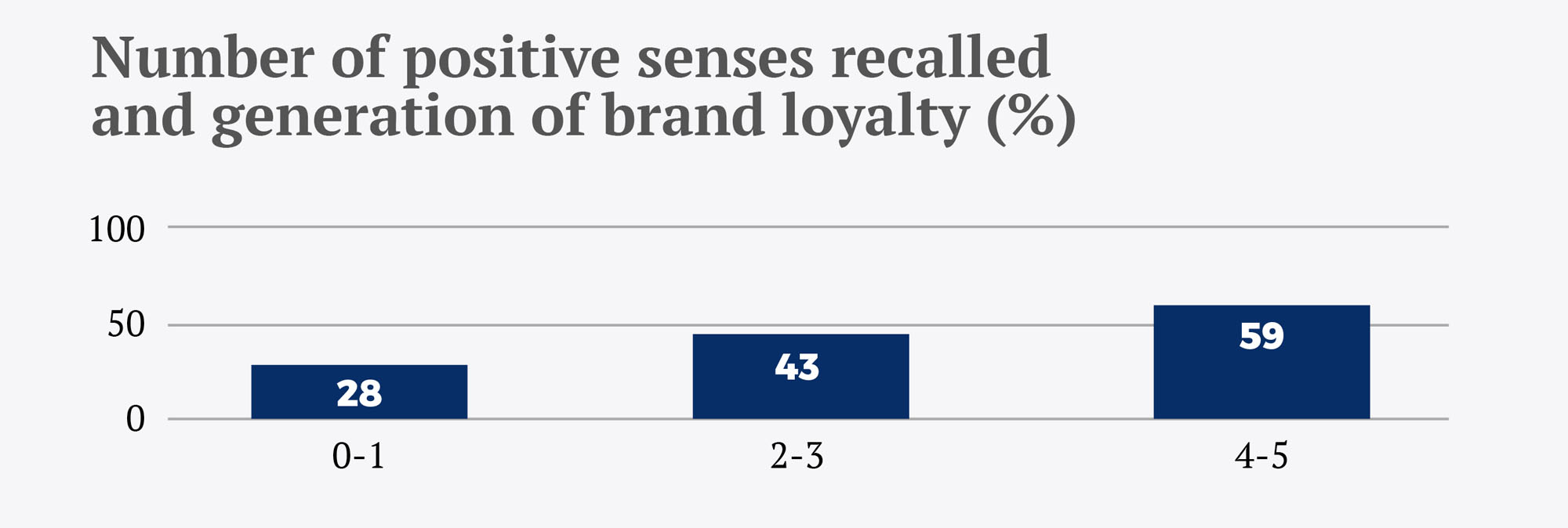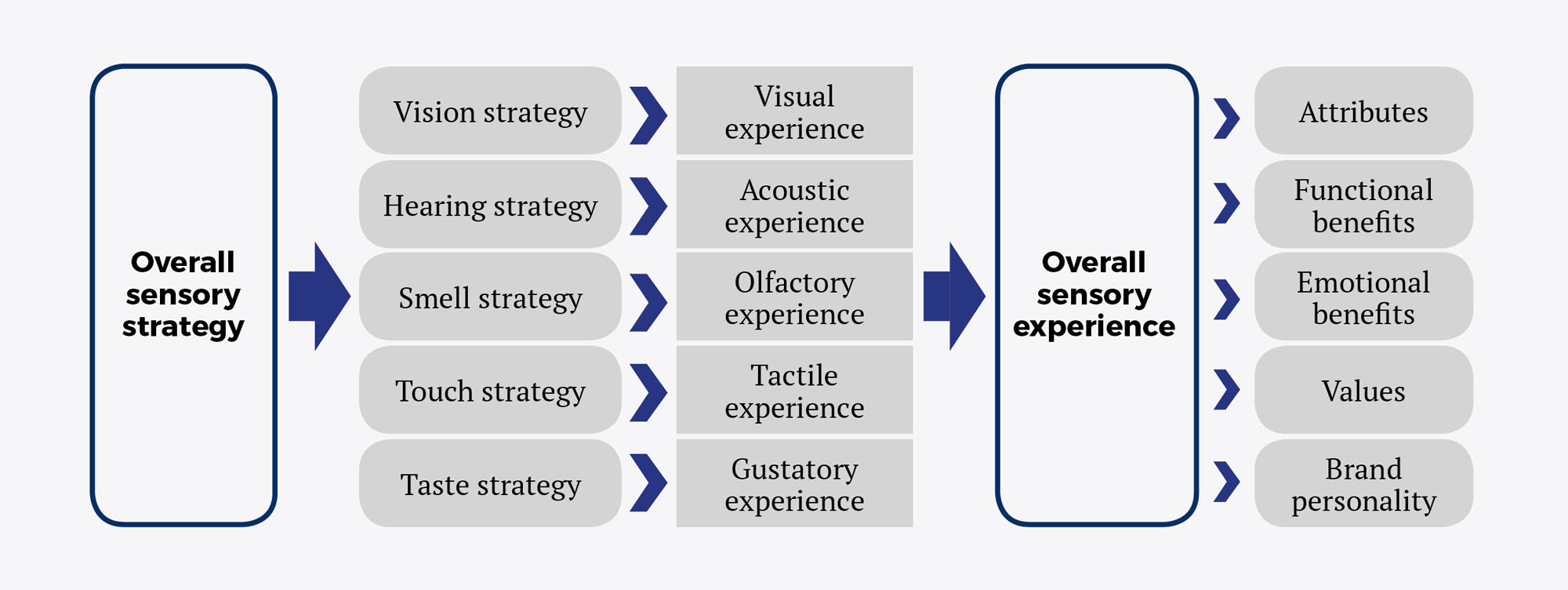As part of the marketer’s quest to connect with—and adapt to—today’s constantly evolving and increasingly demanding consumers, sensory marketing is now considered to be a top-priority activity. Sensory marketing leverages all five senses to influence perceptions, memories, and learning processes, with the aim of manipulating consumers’ motivations, desires, and behavior. The goal is to create a sensory experience that strengthens the connection with users through a process that involves both the rational and the emotional parts of the brain, although to varying degrees. As part of this process, the subconscious component facilitates automatic decision-making and behaviors on the basis of lessons learned through past experiences.
The development of sensory marketing has been driven by two main factors. The first factor is scientific research, particularly in the field of neuroscience, which is closely linked to the marketing function. Neuroscience helps us understand the brain processes involved in perception and behavior, as well as the role played by emotion and reason. The second factor is the evolution of the markets. Today’s markets are increasingly competitive and global. Brands, and their ability to differentiate themselves, are more important than ever, and buying behavior is increasingly driven by emotional factors rather than rational processes.
As a consequence, three main areas of activity have developed in sensory marketing. The first area focuses on the creation of buyer and user experiences through what is known as “360° sensory marketing,” with the aim of influencing every stage of the buyer’s behavior. The second area involves harnessing all five senses in an integrated manner, aligning the entire sensory experience towards a single objective. And finally, the third area involves using the senses to consolidate the brand, with emphasis on one predominant, identity-shaping sense—that is, a sensory signature.
A memorable experience can forge a stronger connection to the product or service, increase satisfaction, and influence the consumer’s behavior and attitude.
Optimizing the experience
Creating the right sort of shopping experience—either physical or virtual—is a high-priority objective for brands. A memorable experience can forge a stronger connection to the product or service, increase satisfaction, and influence the consumer’s behavior and attitude. As a result, the consumer becomes more predisposed to make a purchase, spends more time in the store, has more exposure to the various categories, and in turn becomes more predisposed to make future purchases. By setting this process in motion, the brand also improves its image.
Consumer behavior can be influenced by sensory marketing to generate experiences at every stage of the buying process: activation of desire, awareness of the product or service, assessment of the product or service in relation to other options, purchase, and post-purchase evaluation of use or consumption. This sort of 360° sensory marketing serves to define the points of contact between the consumer and the brand at every behavioral stage: before the purchase, during the purchase, and during final use.
Source: Compiled by the authors using data from Prophet.
The points of contact are identified and prioritized according to their importance in the buying process in terms of the specific objectives of each stage, which include the development of brand awareness, the communication of added value and relevance to the consumer, and the actual user experience. Once the partial objectives for each stage have been set, the specific senses that influence each objective are identified and their functions and characteristics are established in order to maximize their contribution to the overall objectives.
Of key importance are two “moments of truth” that take place when the brand interacts with its market. The first moment occurs when the consumer makes a selection at the point of sale, and the second one occurs when the user experiences the product and its benefits.
A higher degree of sensory stimulation means more communication and a better experience.
Five integrated senses
The importance of each of the five senses in the transmission of perceptions and the generation of experiences depends on the nature of the product or service and the stage of buying behavior in question. As a rule, however, a higher degree of sensory stimulation means more communication and a better experience. Research has shown that the involvement of multiple senses can have a multiplier effect on perceptions when the senses in question communicate synergistic messages. In other words, each sensory stimulus reinforces the messages conveyed by all the others, giving rise to stronger, more consistent, and more holistic perceptions. This integrated accumulation of sensory impacts improves the consumer’s perception, lodging it deeper into his or her memory. Multisensory perceptions therefore facilitate faster product recognition and attribution in response to stimuli, as well as higher processing speeds and consequently a better assessment of the message.
Source: Hollis, N. (2007). Smelly Business. ESOMAR Fragrance 2007. Millward Brown.
Vision and touch are recognized as the main senses involved in the perception of most products, but they are typically associated with the more functional objectives and with a predominantly conscious process. The generally lesser-valued senses of taste, smell, and hearing contribute a more emotional component in the generation of experiences and have a greater impact on loyalty.
Sensory branding and sensory signature
The main strategic objective of sensory marketing is to communicate a brand image—in other words, sensory branding. The goal is to use the senses to reinforce the product’s attributes, functional or emotional benefits, values, and personality, conveying its relevance to the consumer and helping to communicate its brand identity, while at the same time—and most importantly—communicating the product’s differential value for a specific segment of customers in an increasingly competitive market.
Sensory branding is developed through a sensory strategy, which determines which senses will be used in the communication of the image and connects each sense with the consumer, while also defining the messages and experiences to be developed by each sense. A key part of sensory branding is the development of a brand’s sensory signature—the main perception associated with a product or service. The sensory signature identifies and differentiates the product and conveys the main message that the marketers wish to communicate to the market.
The sensory signature summarizes a product’s positioning and main competitive advantage. Selecting this signature is therefore a critical decision for any brand. There are only two requirements for a sensory signature: the sense selected must be suitable for communicating the category to a particular consumer segment and, most importantly, the signature must communicate the brand’s differential value proposition. As long as those two requirements are met, any sense can become a sensory signature.
Source: compiled by the authors.
A brand’s sensory strategy is developed through various marketing activities, including the details of the product itself (name, brand, packaging, formula, etc.), the way in which it is communicated (advertising, promotions, sales arguments, etc.), and actions associated with the point of sale (location, merchandising, etc.).
© IE Insights.














